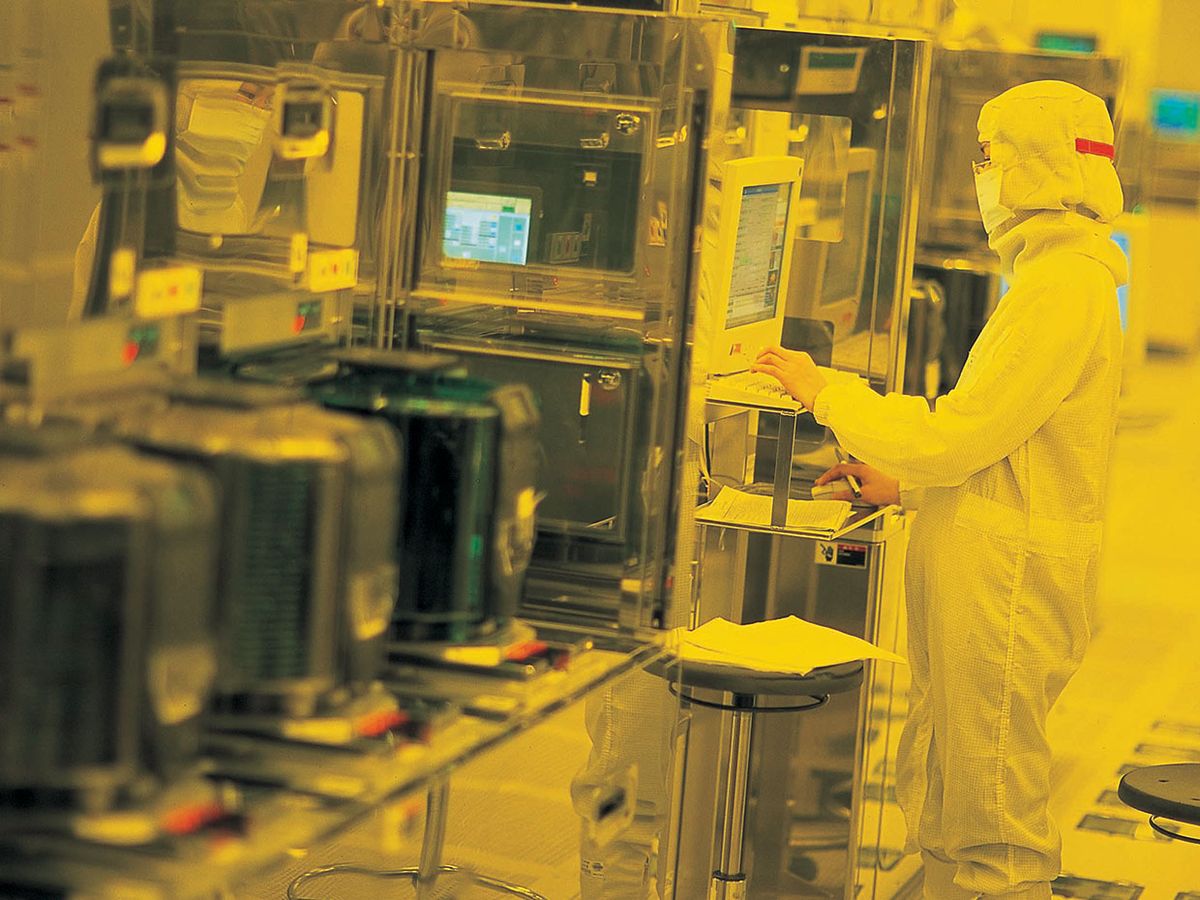“Those who know, know.” That was all that TSMC senior director of advanced technology Geoffrey Yeap would say about the mystery ingredient that helps boost the performance of devices made using the company’s next generation manufacturing process. N5, TSMC’s 5-nanometer process, is on track for high-volume production during the first half of 2020, Yeap told engineers at the IEEE International Electron Device Meeting in San Francisco, Wednesday.
Compared with the company’s 7-nanometer process, used to make iPhone X processors among other high-end systems, N5 leads to devices that are 15 percent faster or 30 percent more power efficient. It produces logic that is 1.84 times as small as the previous process and produces SRAM cells that are only 0.021 square micrometers, the most compact ever reported, Yeap said.
The process is currently in what’s called risk production—initial customers are taking a risk that it will work for their designs. Yeap reported that initial average SRAM yield was about 80 percent and that yield improvement has been faster for N5 than any other recent process introduction.
Some of that yield improvement is likely due to the use of extreme ultraviolet lithography (EUV). N5 is the first TSMC process designed around EUV. The previous generation was developed first using the established 193-nanometer immersion lithography first, and then when EUV was introduced, some of the most difficult to produce chip features were made with the new technology. Because it uses a 13.5-nanometer light instead of 193-nanometers, EUV can define chip features in one step—compared with three or more steps using 193-nanometer light. With more than 10 EUV layers, N5 is the first new process “in quite a long time” that uses fewer photolithography masks than its predecessor, Yeap said.
Part of the performance enhancement comes from the inclusion, for the first time in TSMC’s process, of a “high-mobility channel”. Charge carrier mobility is the speed with which current moves through the transistor, and therefore limits how quickly the device can switch. Asked (several times) about the makeup of the high-mobility channel, Yeap declined to offer details. “Those who know, know,” he said, prompting laughter from the audience. TSMC and others have explored germanium-based channels in the past. And earlier in the day, Intel showed a 3D process with silicon NMOS on the bottom and a layer of germanium PMOS above it.
Yeap would not even be tied down on which type of transistor, NMOS or PMOS or both, had the enhanced channel. However, the latter is probably not very mysterious. Holes generally travel more slowly through silicon devices than electrons and therefore the PMOS devices would benefit from enhanced mobility. When pressed Yeap confirmed that only one variety of device had the high-mobility channel.
This post was corrected on 16 December 2019. N5 offers 15 percent performance improvement or 30 percent better power efficiency, not both at once.
Samuel K. Moore is the senior editor at IEEE Spectrum in charge of semiconductors coverage. An IEEE member, he has a bachelor's degree in biomedical engineering from Brown University and a master's degree in journalism from New York University.



